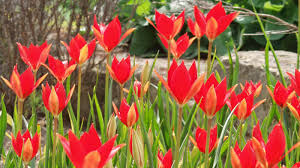I have recently finished a distance learning course with the Horticultural Correspondence College (HCC). This consisted of eight modules, the aim of which is to prepare me for taking exams for two RHS certificates. The certificates are:
Principles of Plant Growth, Propagation and Development
and
Principles of Garden Planning, Establishment and Maintenance
I’ve got to say I’ve really enjoyed doing the work. It’s been interesting to learn more about plants and garden design. It’s been very useful to work at my own pace, and I’ve found myself looking forward to doing the course work.
One of the things it has given me is a deep appreciation for plants and their strategies for survival. Things that move can run away from danger, things that are rooted in the ground cannot. But plants are not helpless. Far from it. Their ability to regenerate from a leaf, a stem, roots or seed is amazing. Californian Redwoods can grow to be 240 feet tall, yet they start as seeds barely 3 millimetres, one eighth of an inch long. The seeds of some plants are so tiny that they resemble dust; and of course you get the other end of the scale with the coconut, the fruit of which will kill you if it fell on your head.
Getting back to the course and the RHS qualifications. I have now taken four exams, with four more to go. I took two exams in February and I’m hoping to take two more in June. Leaving the last two for next year. Studying for exams and trying to remember everything is never easy; also trying to anticipate what the examiner is looking for is also difficult.
One of the aids that the HCC gave me was a leaflet where I could write about my favourite plants. During my recent revision I wrote and read this almost constantly. This had the slightly un-fortunate result of turning me off some of my favourites. In some cases I don’t grow any alpines so I had to learn about these. In other cases I’m so used to common names that learning the Latin names was arduous. But I kept at it, and I learned a lot more about plants and trees, which surely is the whole point of the exercise.
Now, that the exams are over, I’m looking forward to getting some of these ‘new favourites’ and trying them in the garden. Two definitely spring to mind: Tulipa Sprengeri and Gentiana sino-ornata. These are both alpines and are quite stunning:


The tulips flower in spring so I’ll have to wait to Autumn to get the bulbs for them but the Gentianas flower in autumn so I may well treat myself soon. They like acid soil, so the alkaline conditions of my garden won’t suit them BUT there are always pots and containers and as my wife’s favourite colour is blue then I see no reason why we can’t have two pots near the front door!